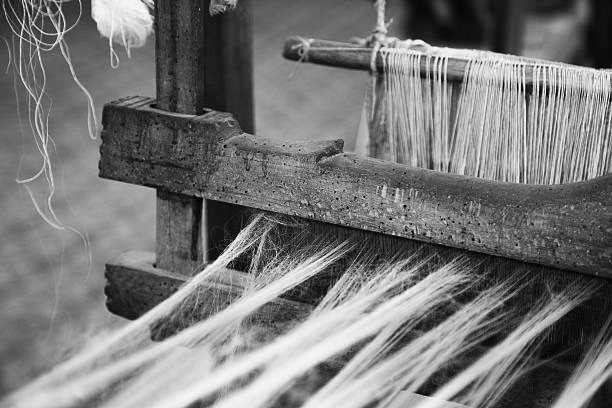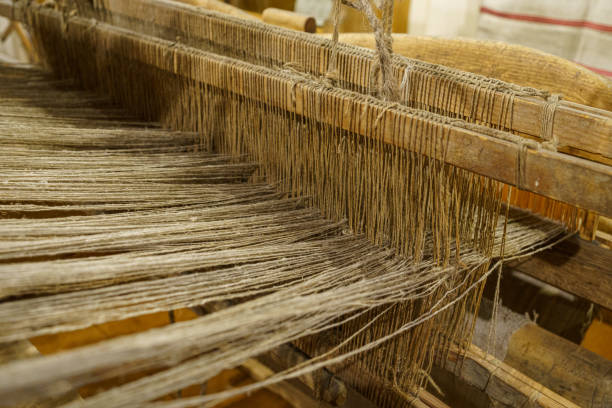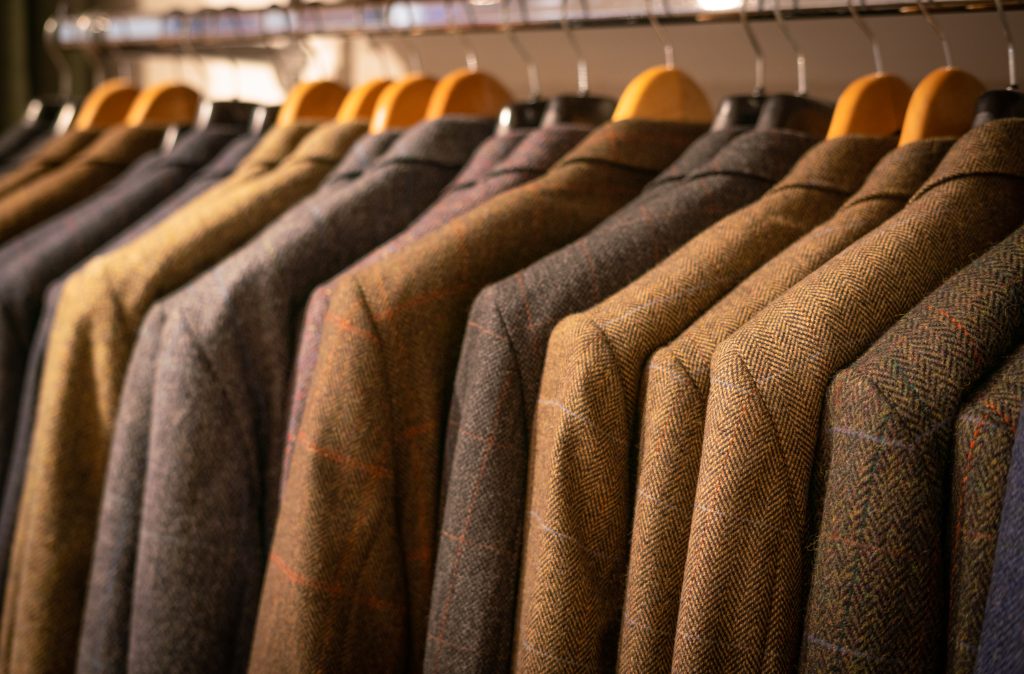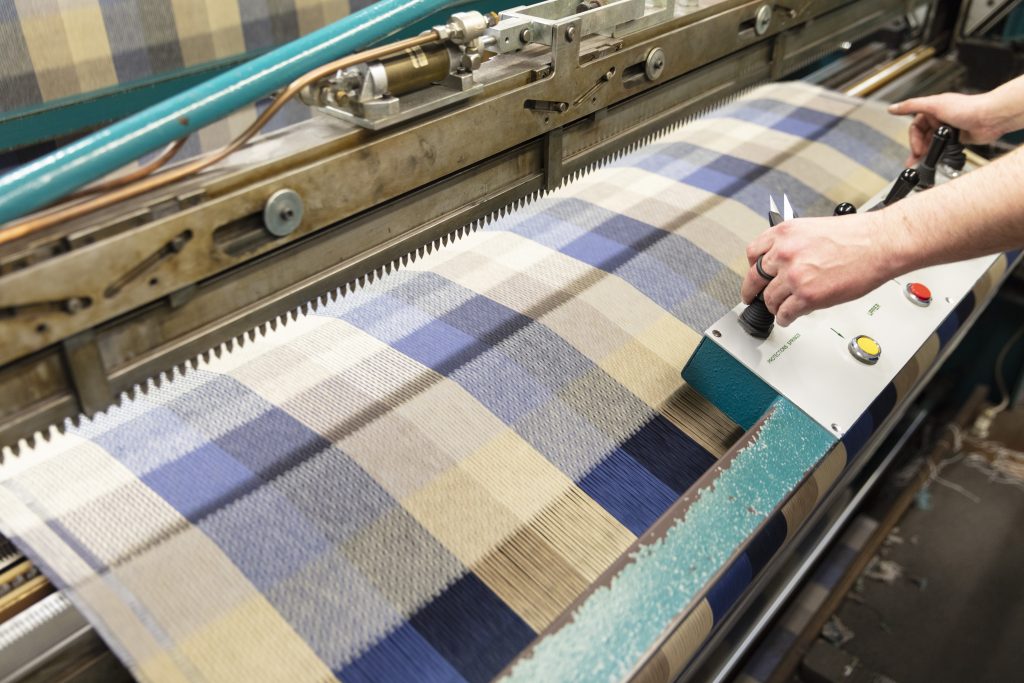The history of weaving in Ireland is deeply intertwined with the country’s cultural heritage, economic development, and artistic traditions. Weaving has been practiced in Ireland for thousands of years, with evidence of early textile production dating back to the Neolithic period. Over time, Irish weaving developed into a thriving industry, producing high-quality fabrics such as wool, linen, and later tweed, which became renowned worldwide.

Early Origins of Weaving in Ireland
The earliest evidence of weaving in Ireland can be traced back to the Neolithic period (around 3000 BC), when early settlers used natural fibres such as flax and wool to create textiles. Archaeological findings, including loom weights and woven fragments, indicate that weaving was an essential skill in early Irish society. The arrival of the Celts around 500 BC introduced new weaving techniques, including the use of patterned cloths and dyes.
The Brehon Laws, a set of ancient Irish legal texts dating back to the early medieval period, mention weaving and textile production, highlighting its importance in society. The laws regulated the production of textiles and even specified the types of garments different social classes could wear, showcasing how woven fabrics played a role in status and identity.
Medieval Weaving and the Rise of Irish Linen

By the medieval period, weaving had become a well-established craft in Ireland. Wool production was dominant, as sheep farming was widespread, and Ireland’s damp climate was ideal for raising sheep. Wool was used to create traditional cloaks called brats, which were common among both the rich and poor.
Linen weaving became particularly significant from the 12th century onwards, as the Irish climate was also suitable for growing flax. The Normans, who arrived in Ireland in the late 12th century, helped improve linen production techniques. However, it wasn’t until the 17th and 18th centuries that Irish linen became internationally famous, especially in Ulster.
The Boom of the Irish Linen Industry (17th–19th Century)
During the 17th and 18th centuries, the linen industry flourished, particularly in Northern Ireland. English and Scottish settlers, encouraged by British rule, brought advanced weaving techniques to Ireland, establishing Belfast as a major linen-producing hub. Irish linen gained a reputation for its superior quality and durability, and by the 19th century, Belfast had earned the nickname the “Linenopolis” of the world.
The success of the linen industry was driven by skilled artisans, improved weaving technology, and export demand, particularly from Britain and North America. By the 19th century, power looms had begun to replace traditional handlooms, increasing production efficiency but also leading to the decline of many smaller hand-weaving businesses.
The Rise of Irish Wool and Tweed
While linen dominated in Northern Ireland, wool and tweed weaving were more prominent in the west and south. Hand-weaving of wool was an integral part of rural life, particularly in counties such as Donegal, Galway, and Kerry. Donegal tweed, a fabric made from local wool and often incorporating vibrant, naturally dyed colours, became a symbol of Irish craftsmanship. The Aran sweater, although not woven, became another famous Irish textile tradition. Hand-knitted using wool, it featured intricate patterns that were deeply symbolic, representing fishing communities along the west coast of Ireland.

20th-Century Decline and Revival of Irish Weaving
The decline of the Irish textile industry began in the early 20th century due to industrialization, economic challenges, and competition from cheaper mass-produced fabrics. Many mills closed, and traditional hand-weaving nearly disappeared. However, efforts to preserve and revive Ireland’s weaving heritage emerged, particularly in the mid-to-late 20th century.
Craft weaving saw a resurgence, with artisan workshops and cooperatives promoting traditional weaving techniques. Irish tweed, particularly Donegal tweed, became popular again as a luxury product and Irish linen maintained its prestige in high-end fashion and home textiles.
Modern Weaving in Ireland

Today, Ireland continues to celebrate its weaving traditions through artisan workshops, heritage brands, and small-scale weaving mills that blend tradition with modern design. Companies such as John Hanly & Co., Avoca, and Magee continue to produce high-quality woven products using time-honoured techniques. Many Irish weavers now focus on sustainability, using natural fibres, ethical production methods, and eco-friendly dyes to appeal to modern consumers.
Fast forward to 1893, when John Hanly & Co. was founded, continuing Ireland’s rich weaving tradition. For over 130 years, we have been crafting high-quality wool and cashmere textiles, keeping this ancient art alive with a modern touch.
Traditional Irish textiles, from linen and wool to tweed, remain an essential part of Ireland’s identity. The weaving industry, though smaller than in its heyday, thrives through a combination of heritage, craftsmanship, and innovation, ensuring that Ireland’s rich textile history continues to evolve.

